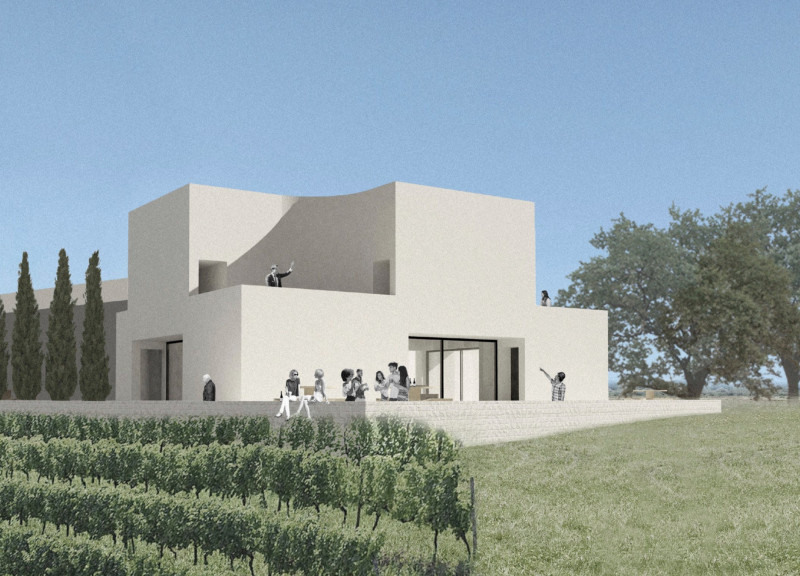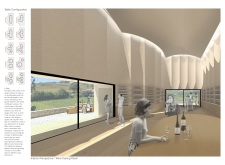5 key facts about this project
The wine tasting pavilion at Quinta do Monte d'Oiro is located in a beautiful vineyard in Portugal. It is designed to support the activity of wine tasting while fostering social connections among visitors. The structure aims to blend indoor and outdoor areas, encouraging people to enjoy the surrounding landscape, which includes rolling hills and extensive vineyards.
Site and Approach
Visitors approach the pavilion along a gravel path that winds through a small grove of trees. This careful arrangement enhances the overall experience, as it offers a moment of reflection before entering the tasting area. The entrance is positioned to shield guests from the busy winemaking activities nearby. At the same time, the pavilion is thoughtfully oriented to capture the best views of the vineyard, inviting guests to appreciate the natural beauty.
Spatial Configuration
Inside the pavilion, a single large room serves as the core space for wine tasting. This room acts as a bridge between the open landscape and a personal experience. Large sliding windows frame stunning views, making it feel as though the outdoors is part of the interior. Curved niches help create intimate spaces for displaying wine bottles and allow light to filter in through a skylight, producing a warm, inviting atmosphere.
Modularity and Interaction
The pavilion features a central table designed with flexibility in mind, enabling different seating arrangements for various group sizes. This table consists of modular pieces that can be combined into a "J"-shaped form made from a square and a quarter circle. Such design allows hosts to create environments that promote conversation and engagement among guests during tastings, enhancing the overall experience.
Cultural Resonance
Incorporating local architectural influences is key to the pavilion's design. Elements drawn from Manueline architecture and decorative Azulejo tiles reflect the cultural history of the region. These choices strengthen the pavilion's connection to its surroundings and honor the tradition of winemaking in Portugal, making the structure relevant to both visitors and the local community.
The pavilion's gently curved walls reflect the contours of the landscape, inviting visitors to engage with the natural setting. Here, the simple act of tasting wine becomes a shared moment, enriched by the beauty of the surroundings and the atmosphere cultivated within.





















































